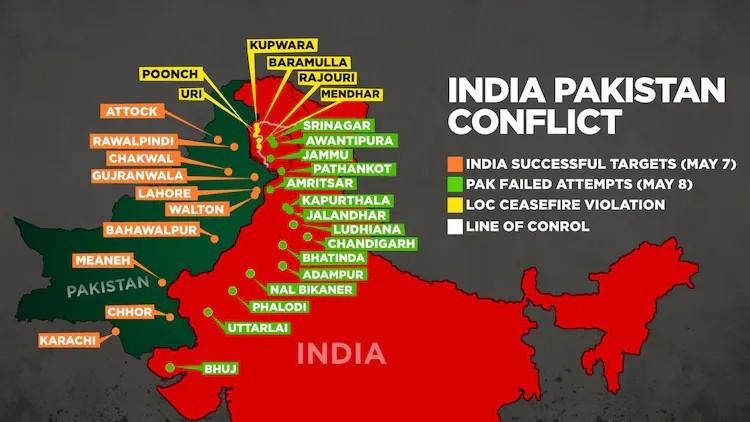How India’s Air Defence Systems Repelled Pakistani Attacks
How India’s Air Defence Systems Repelled Pakistani Attacks
Why in the News ?
India successfully neutralised Pakistani aerial threats along the western border using advanced air defence systems. The counter-response followed Pakistani strikes on Indian targets, where India’s interception capabilities prevented major damage and demonstrated its technological edge in modern warfare.
About the Structure and Working of Air Defence Systems :
- Air Defence Systems combine radar, command centres, fighter jets, missile batteries, and electronic warfare
- They detect, track, and neutralise enemy aircraft, drones, and missiles.
- Based on the C3 concept (Command, Control & Communication), they work in three key phases:
- Detection: Radars identify threats by bouncing radio waves off objects.
- Tracking: Sensors like infrared cameras and lasers continuously monitor threats.
- Interception: Missiles, fighter jets, or drones neutralise the threat depending on range and type.
India’s Interception Capabilities
- IAI HAROP drones (Israeli-made loitering munitions) were used to strike Pakistani air defence systems.
- HAROPs combine features of UAVs and missiles; they can loiter for 9 hours, then dive into targets.
- Their real-time surveillance and autonomous attack modes make them effective for SEAD (Suppression of Enemy Air Defence).
- Fighter aircraft like MiG-21, Su-30, Rafale, Tejas are used for air-to-air interception.
Other Components and Strategic Importance:
- SAMs (Surface-to-Air Missiles): Used in short, medium, and long-range defence, including S-400 and Akash.
- Anti-Aircraft Artillery (AAA): Now used mainly for drone defence and last-resort action.
- Electronic Warfare (EW): Disrupts enemy radar and communication, often deployed via specialised aircraft.
- Air defence plays a crucial role in gaining air superiority and protecting ground operations.




